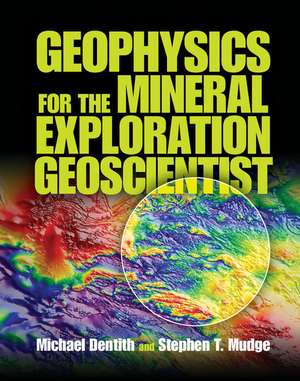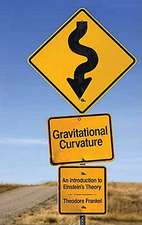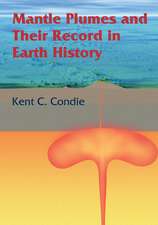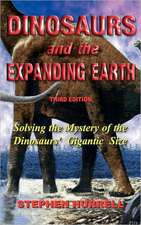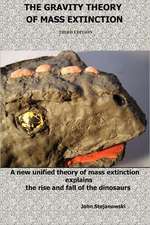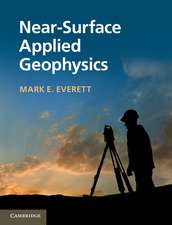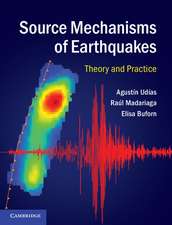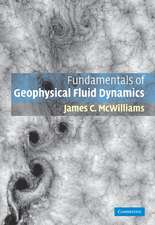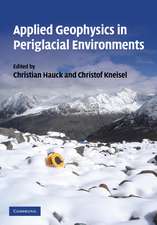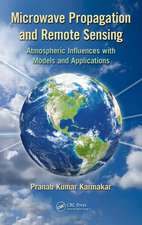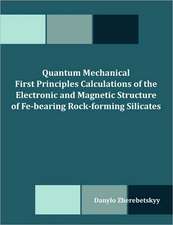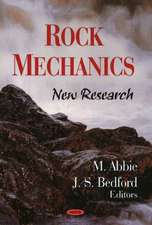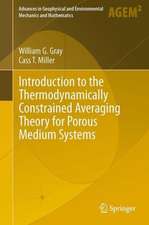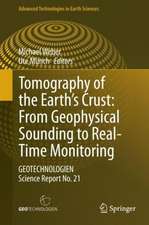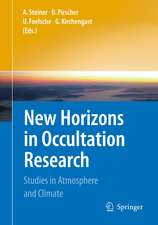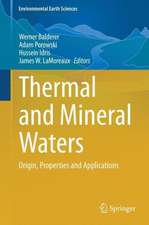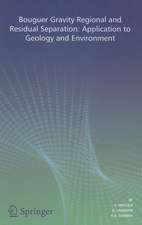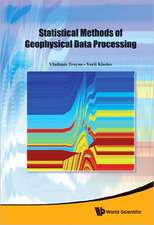Geophysics for the Mineral Exploration Geoscientist
Autor Michael Dentith, Stephen T. Mudgeen Limba Engleză Hardback – 23 apr 2014
Preț: 504.87 lei
Preț vechi: 548.77 lei
-8% Nou
Puncte Express: 757
Preț estimativ în valută:
96.64€ • 105.01$ • 81.23£
96.64€ • 105.01$ • 81.23£
Carte disponibilă
Livrare economică 31 martie-14 aprilie
Livrare express 14-20 martie pentru 68.56 lei
Preluare comenzi: 021 569.72.76
Specificații
ISBN-13: 9780521809511
ISBN-10: 0521809517
Pagini: 454
Ilustrații: 330 colour illus. 15 tables
Dimensiuni: 223 x 282 x 24 mm
Greutate: 1.52 kg
Ediția:New.
Editura: Cambridge University Press
Colecția Cambridge University Press
Locul publicării:Cambridge, United Kingdom
ISBN-10: 0521809517
Pagini: 454
Ilustrații: 330 colour illus. 15 tables
Dimensiuni: 223 x 282 x 24 mm
Greutate: 1.52 kg
Ediția:New.
Editura: Cambridge University Press
Colecția Cambridge University Press
Locul publicării:Cambridge, United Kingdom
Cuprins
Preface; Acknowledgements; 1. Introduction; 2. Geophysical data acquisition, processing and interpretation; 3. Gravity and magnetic methods; 4. Radiometric method; 5. Electrical and electromagnetic methods; 6. Seismic method; References; Index; Online appendices: Appendix 1. Vectors; Appendix 2. Waves and wave analysis; Appendix 3. Magnetometric methods; Appendix 4. Magnetotelluric electromagnetic methods; Appendix 5. Radio and radar frequency methods; Appendix 6. Seismic refraction method; Appendix 7. Sources of information on exploration and mining geophysics.
Recenzii
'More and more, great ore deposits are being found under cover and knowledge of exploration geophysics provides a distinct advantage in their discovery. Dentith and Mudge provide a clear, comprehensive, up-to-date, and (very significantly) applied approach for the general geologist, demonstrating how to locate concealed orebodies by employing modern-day geophysical techniques.' Richard J. Goldfarb, Fellow, Society of Economic Geologists
'Readers will really appreciate the up-to-date system descriptions, examples and case histories presented … In particular, the diagrams in this textbook are superb; the explanatory diagrams have been drawn professionally and the geophysical data and images are shown in full colour.' Richard Smith, Laurentian University
'There are few books for browsing and those worthy of purchase - for anyone in mineral exploration and interested in getting a better sense of what those geophysical anomalies and images are all about, this is definitely one to buy.' K. Howard Poulsen, Economic Geology
'Dentith and Mudge have written the book so exploration geologists can learn what they need to know, and perhaps more importantly what they need to ask, about geophysical techniques and interpretation, with the reader benefiting from the enormous collective experience and knowledge of the authors, digested into a series of clear practical do's and don'ts. This is very much a practical book, written for the practising exploration geologist … I also particularly like the use of summaries at the end of sections and chapters, which allowed me to pull together the key take-home messages … This is a beautifully illustrated text that covers geophysical data use all the way from introductory concepts through to visualisation and interpretation pitfalls … I see this book as essential reading for all exploration geologists, especially those who don't have their "junior geophysics scout badge".' CET Newsletter
'… this is an excellent book which will likely become a landmark reference. With its large double-column format, it contains much more than the page count might suggest and is truly impressive in the range of topics covered. The organization, presentation, and writing style are all top-notch, and the authors' decades of experience clearly show through. Highly recommended.' The Leading Edge
'… in addition to elaborating on the pitfalls and limitations of each method, Dentith and Mudge place much more emphasis on both the variations of physical properties within the geologic environment and data interpretation. These differences alone separate this textbook from other geophysical exploration textbooks and make it of greater value to the geoscientist who typically does not think about the geologic environment in terms of physical properties.' Mineralium Deposita
'[This] book is highly recommended and a great addition to a personal library. Let's hope that the extra insights it provides to geophysical exploration will contribute towards future mineral discoveries.' Mining News Review
'The authors are to be complimented for having produced this well-written book. The organisation of the book is very good and easy to follow, and the data are clearly presented, and as a geoscientist with only a basic knowledge of geophysics, I am pleased to recommend this book as a 'must-read' for all geoscientists.' Ore Geology Reviews
'Readers will really appreciate the up-to-date system descriptions, examples and case histories presented … In particular, the diagrams in this textbook are superb; the explanatory diagrams have been drawn professionally and the geophysical data and images are shown in full colour.' Richard Smith, Laurentian University
'There are few books for browsing and those worthy of purchase - for anyone in mineral exploration and interested in getting a better sense of what those geophysical anomalies and images are all about, this is definitely one to buy.' K. Howard Poulsen, Economic Geology
'Dentith and Mudge have written the book so exploration geologists can learn what they need to know, and perhaps more importantly what they need to ask, about geophysical techniques and interpretation, with the reader benefiting from the enormous collective experience and knowledge of the authors, digested into a series of clear practical do's and don'ts. This is very much a practical book, written for the practising exploration geologist … I also particularly like the use of summaries at the end of sections and chapters, which allowed me to pull together the key take-home messages … This is a beautifully illustrated text that covers geophysical data use all the way from introductory concepts through to visualisation and interpretation pitfalls … I see this book as essential reading for all exploration geologists, especially those who don't have their "junior geophysics scout badge".' CET Newsletter
'… this is an excellent book which will likely become a landmark reference. With its large double-column format, it contains much more than the page count might suggest and is truly impressive in the range of topics covered. The organization, presentation, and writing style are all top-notch, and the authors' decades of experience clearly show through. Highly recommended.' The Leading Edge
'… in addition to elaborating on the pitfalls and limitations of each method, Dentith and Mudge place much more emphasis on both the variations of physical properties within the geologic environment and data interpretation. These differences alone separate this textbook from other geophysical exploration textbooks and make it of greater value to the geoscientist who typically does not think about the geologic environment in terms of physical properties.' Mineralium Deposita
'[This] book is highly recommended and a great addition to a personal library. Let's hope that the extra insights it provides to geophysical exploration will contribute towards future mineral discoveries.' Mining News Review
'The authors are to be complimented for having produced this well-written book. The organisation of the book is very good and easy to follow, and the data are clearly presented, and as a geoscientist with only a basic knowledge of geophysics, I am pleased to recommend this book as a 'must-read' for all geoscientists.' Ore Geology Reviews
Notă biografică
Descriere
A state-of-the-art overview of geophysical methods for mineral exploration, demonstrating practical application and interpretation supported by real geophysical data examples.
